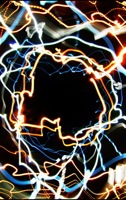Difference between revisions of "Short circuit"
(Created page with 'File:lighterstill.jpgright|frame *[http://en.wikipedia.org/wiki/19th_century 1854] ==Definition== *1:an abnormal low-[http://en.wikipedia.org/wik...') |
m (Text replacement - "http://" to "https://") |
||
| Line 1: | Line 1: | ||
[[File:lighterstill.jpg]][[File:Short-circuit1.jpg|right|frame]] | [[File:lighterstill.jpg]][[File:Short-circuit1.jpg|right|frame]] | ||
| − | *[ | + | *[https://en.wikipedia.org/wiki/19th_century 1854] |
==Definition== | ==Definition== | ||
| − | *1:an abnormal low-[ | + | *1:an abnormal low-[https://en.wikipedia.org/wiki/Electrical_resistance resistance] connection between two nodes of an [https://en.wikipedia.org/wiki/Electrical_circuit electrical circuit] intended to be at different voltages. This results in an excessive [https://en.wikipedia.org/wiki/Electric_current electric current] (overcurrent) limited only by the [https://en.wikipedia.org/wiki/Th%C3%A9venin%27s_theorem Thévenin equivalent resistance] of the rest of the network and potentially causes circuit damage, overheating, [[fire]] or [[explosion]]. Although usually the result of a fault, there are cases where short circuits are caused intentionally, for example, for the purpose of voltage-sensing [https://en.wikipedia.org/wiki/Crowbar_(circuit) crowbar circuit protectors]. |
==Description== | ==Description== | ||
| − | A '''short circuit''' (sometimes abbreviated to short or s/c) is an [ | + | A '''short circuit''' (sometimes abbreviated to short or s/c) is an [https://en.wikipedia.org/wiki/Electrical_network electrical circuit] that allows a current to travel along an unintended [[path]], often where essentially no (or a very low) [https://en.wikipedia.org/wiki/Electrical_impedance electrical impedance] is encountered. The electrical [[opposite]] of a short circuit is an "[https://en.wikipedia.org/wiki/Open-circuit_voltage open circuit]", which is an infinite resistance between two nodes. It is common to misuse "short circuit" to describe any [[electrical]] malfunction, regardless of the actual [[problem]]. |
| − | A common type of short circuit occurs when the positive and negative terminals of a [ | + | A common type of short circuit occurs when the positive and negative terminals of a [https://en.wikipedia.org/wiki/Battery_(electricity) battery] are connected with a low-[https://en.wikipedia.org/wiki/Electrical_resistance resistance] conductor, like a wire. With low resistance in the connection, a high [https://en.wikipedia.org/wiki/Current_(electricity) current] exists, causing the cell to deliver a large amount of energy in a short time. |
| − | A large current through a battery can cause the rapid buildup of [[heat]], potentially resulting in an [[explosion]] or the release of hydrogen gas and [ | + | A large current through a battery can cause the rapid buildup of [[heat]], potentially resulting in an [[explosion]] or the release of hydrogen gas and [https://en.wikipedia.org/wiki/Electrolyte electrolyte] (an acid or a base), which can burn tissue, cause [[blindness]] or even [[death]]. Overloaded wires can also overheat, sometimes causing damage to the wire's [[insulation]], or a [[fire]]. High current conditions may also occur with [https://en.wikipedia.org/wiki/Electric_motor electric motor] loads under stalled conditions, such as when the impeller of an electrically driven pump is jammed by debris; this is not a short, though it may have some similar [[effects]]. |
In electrical devices, unintentional short circuits are usually caused when a wire's [[insulation]] breaks down, or when another conducting material is introduced, allowing charge to [[flow]] along a different [[path]] than the one intended. | In electrical devices, unintentional short circuits are usually caused when a wire's [[insulation]] breaks down, or when another conducting material is introduced, allowing charge to [[flow]] along a different [[path]] than the one intended. | ||
| − | A short circuit may lead to formation of an [ | + | A short circuit may lead to formation of an [https://en.wikipedia.org/wiki/Electric_arc arc]. The arc, a channel of hot ionized [https://en.wikipedia.org/wiki/Plasma_(physics) plasma], is highly conductive and can [[persist]] even after significant amount of original material of the conductors was evaporated. Surface erosion is a typical sign of electric arc damage. Even short arcs can remove significant amount of materials from the electrodes.[https://en.wikipedia.org/wiki/Short_circuit] |
[[Category: Physics]] | [[Category: Physics]] | ||
Latest revision as of 02:37, 13 December 2020
Definition
- 1:an abnormal low-resistance connection between two nodes of an electrical circuit intended to be at different voltages. This results in an excessive electric current (overcurrent) limited only by the Thévenin equivalent resistance of the rest of the network and potentially causes circuit damage, overheating, fire or explosion. Although usually the result of a fault, there are cases where short circuits are caused intentionally, for example, for the purpose of voltage-sensing crowbar circuit protectors.
Description
A short circuit (sometimes abbreviated to short or s/c) is an electrical circuit that allows a current to travel along an unintended path, often where essentially no (or a very low) electrical impedance is encountered. The electrical opposite of a short circuit is an "open circuit", which is an infinite resistance between two nodes. It is common to misuse "short circuit" to describe any electrical malfunction, regardless of the actual problem.
A common type of short circuit occurs when the positive and negative terminals of a battery are connected with a low-resistance conductor, like a wire. With low resistance in the connection, a high current exists, causing the cell to deliver a large amount of energy in a short time.
A large current through a battery can cause the rapid buildup of heat, potentially resulting in an explosion or the release of hydrogen gas and electrolyte (an acid or a base), which can burn tissue, cause blindness or even death. Overloaded wires can also overheat, sometimes causing damage to the wire's insulation, or a fire. High current conditions may also occur with electric motor loads under stalled conditions, such as when the impeller of an electrically driven pump is jammed by debris; this is not a short, though it may have some similar effects.
In electrical devices, unintentional short circuits are usually caused when a wire's insulation breaks down, or when another conducting material is introduced, allowing charge to flow along a different path than the one intended.
A short circuit may lead to formation of an arc. The arc, a channel of hot ionized plasma, is highly conductive and can persist even after significant amount of original material of the conductors was evaporated. Surface erosion is a typical sign of electric arc damage. Even short arcs can remove significant amount of materials from the electrodes.[1]
